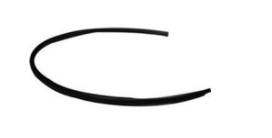Editor's note: This post has been updated in August 2025 for comprehensiveness.
In manufacturing, static electricity isn’t just annoying to deal with; it’s a silent threat that can lead to safety hazards, costly downtime, and product defects.
If you’ve ever wondered, “How do I get rid of static electricity on the production floor?”, the answer lies in choosing the right ESD (electrostatic discharge) control solutions for your application.
This guide will show you how to eliminate static with proven, easy-to-implement strategies. From grounding systems to humidity control and anti-static materials, we’ll cover the essential tools, techniques, and best practices that manufacturing professionals trust to keep operations safe, efficient, and compliant.
Jump To Section:
How to Remove ESD| How to Avoid ESD | Still Having Static Issues? |
What are Ionizers? | Additional Resources
Want to see these strategies in action?
Watch Our Demo Today!
The Why and How to Remove Static Electricity and Electrostatic Discharge
Discover the ‘why’ behind ESD and the practical, step-by-step solutions you can start using today. From proven grounding techniques to smart environmental controls, you’ll get clear, actionable guidance to eliminate static and safeguard your entire manufacturing process.
New to ESD? Learn what it is and why it’s a serious concern for manufacturers in our quick guide: Static Electricity & ESD – Why It Matters.
Video not loading? Watch on YouTube
Best Practices to Avoid ESD in Manufacturing Environments
1. Avoid Moving Air
Did you know that moving air can cause enough friction to ionize materials? It is especially true for the synthetic materials.
Avoid:
- Placing products and electrical equipment near fans, HVAC vents, or other air-moving systems.
- Cleaning electronics with compressed air (unless it’s ionized air, which we’ll cover later).
2. Remove Rugs and Carpets

As a kid, you may have rubbed your feet on a rug to get your hair to stand up on end or to give someone a zap. This may have been fun then, but it's not wanted in your plant today!
Solutions:
- Remove rugs and carpets wherever possible.
- If remodeling isn’t an option, treat flooring with anti-static compounds.
- Use anti-static floor mats to reduce charge buildup.
3. Use Grounding Devices to Dissipate Charge
Grounding devices don’t remove existing static, but they prevent it from building up. Some examples include:
|

Anti-static floor mats eliminate static buildup under a person's feet.
Shop Today!
|

Electrostatic wrist straps are simple grounding tools to help dissipate static electricity. Electrical tool operators should wear these as they work to avoid generating a static charge – especially when working with sensitive electronics.
Shop Today!
|

Electrostatic safe surfaces allow operators to safely handle ESD-sensitive products and equipment without building a static charge.
Shop Today!
|
|

Electrostatic-safe bags safely store products and protect them from damaging ESD events.
Shop Today!
|

Anti-static tubing is made from a conductive resin, making it ideal for high-static environments.
Shop Today!
|

Anti-static tools and material holders allow workers to move and work on the assembly without generating a static charge.
Shop Today!
|
Still Struggling with Static? Find the Source First.
If following the best practices above isn’t stopping ESD events, the next step is to pinpoint exactly where static is building up. You can’t eliminate the problem until you know where it lives.
That's where we come in.
The most accurate way to do this is to have a professional, like Airline, come on-site to take precise measurements. We not only locate the hotspots but also recommend the most cost-effective, long-term solutions tailored to your facility. Contact us today to schedule an on-site consultation.
If an on-site visit isn’t possible right away, your next-best option is to use static measurement equipment. A great choice is a handheld meter like the SMC IZH10, portable, easy to use, and ideal for quickly identifying static-prone areas. For continuous oversight, permanently installed sensors can track problem zones and confirm your ESD control measures are working over time.

Once you know where the problem spots are, it's sometimes good to install a permanently installed sensor to monitor those areas and ensure your solutions are working correctly.
Once you pinpoint high static areas, the next step is to select one or more ionizers to dissipate the charge correctly.
What Are Ionizers?

Electrical ionizers are devices you can install to help eliminate existing static charges on the surface of a material. They generally work by pulling positive and negative ions from the air and releasing them towards a charged target. When the ions reach the target, they naturally absorb the ions to achieve equilibrium (no charge).
There are many different ionizers, each with its pros and cons, making them very situational. Interested in choosing the right ionizer for your situation? Read more in our article, Ionizers 101: Choosing the Right One to Eliminate Static Electricity & ESD
Need Help Now?
Don’t let static electricity put your products, equipment, or team at risk. Our experts can find the source, recommend the right ionizers, and help you build a static-free manufacturing environment.
Contact us today to schedule your assessment and protect your operations!
|
Additional Resources
Contact Us!
Ask your Airline Rep. or contact us for assistance with ordering or customizing an order.

















Leave Comment